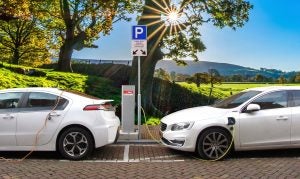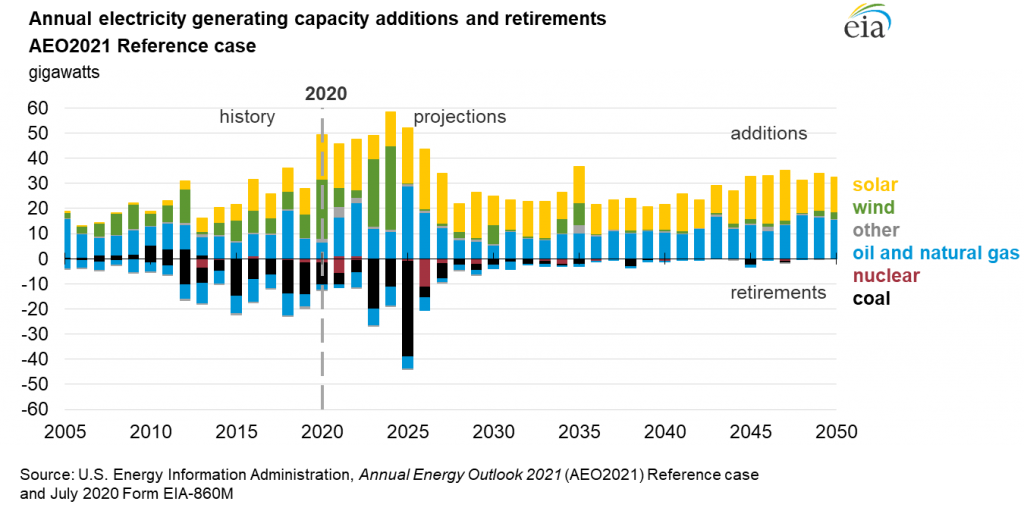The Wall Street Journal says electric vehicles are better – but underestimates how much
 A recent Wall Street Journal article answers definitively YES to the question of whether electric vehicles are really better for the environment. But even this strong endorsement of electric vehicles underestimates just how good these cars, trucks and buses will be for our climate and air.
A recent Wall Street Journal article answers definitively YES to the question of whether electric vehicles are really better for the environment. But even this strong endorsement of electric vehicles underestimates just how good these cars, trucks and buses will be for our climate and air.
The article reports findings from researchers at the University of Toronto. The researchers compared vehicle emissions for a 2021 Toyota RAV4 and a Tesla Model 3. The study is clear that operations are cleaner for electric vehicles. With each mile driven, the electric vehicles’ environmental performance outpaced gasoline-powered cars, quickly wiping out the slightly higher production emissions for electric vehicles.
Even with a relatively dirty fossil-fuel-based electricity generation mix and metal-intensive battery materials, this study – which looked only at a snapshot of technology as it is today – found that electric vehicles break even with gasoline-powered cars at about 20,000 miles of lifetime usage. And that break-even point is getting lower quickly, as electric vehicle technology accelerates faster than a Polestar with a tailwind.
The Wall Street Journal article finds that gasoline vehicle emissions are 77% higher than an electric vehicle powered by a national average generation mix at the 100,000 mile usage mark. It doesn’t explain, though, that the average car in the United States will be driven about 11,100 miles per year for 9.5 years – totaling more than 105,000 miles. It also doesn’t explain that light, medium and heavy duty trucks are driven much more than cars, meaning even more emissions benefits. The article also compares greenhouse gas pollution, ignoring the significant health and environmental benefits of eliminating cancer-causing exhaust from our children’s school grounds and crowded urban areas.
Regarding the University of Toronto study, in addition to a myopic view of emissions and static representation of quickly evolving electric vehicle production methods, there are several assumptions that merit more sophisticated representation:
- Electricity will keep getting cleaner. It’s not appropriate to assume that today’s national average generation mix will stay the same in the future. For example, the U.S. Energy Information Administration’s Annual Energy Outlook for 2021 reference case includes a decline of coal power, and forecasts renewable generation will be 60% of the one terawatt of cumulative capacity added thru 2050.
- Electric vehicles will have “time of use” electricity pricing plans, which mean they’ll have economic incentive to charge up when electricity is cheaper. As more renewable solar and wind generation becomes available, the cheaper electricity will also be the cleanest. We see this already in California, Hawaii and Texas where renewable generation is a small part of total capacity but has a large influence on wholesale energy prices, in part because it is hard to store. Already many areas, like Texasand California, are curtailing excess renewable generation because it doesn’t line up with demand. Electric vehicles are poised to store up that low-cost, clean power.
- Battery production does have a concerning environmental footprint, but future battery raw materials will change and manufacturing methods will improve in terms of efficiency, sustainability, and worker and human rights. Industry leaders are committing to supply-chain reforms related to both environmental footprints and worker rights. For example, Tesla has committed to exploring how to reuse materials, yet today only 5% of li-ion batteries are recycled. Several other efforts are also underway, including OECD Due Diligence Guidance for Responsible Supply Chains of Minerals from Conflict-Affected and High-Risk Areas, the Responsible Minerals Assurance process, the Extractive Industries transparency Initiative, and the Cobalt Industry Responsible Assessment Framework. A variety of battery technologies are in play, with a shift away from high amounts of nickel and cobalt towards lithium iron phosphate and lithium-air or other chemistries that could dramatically reduce raw material demand and battery supply chain impacts. The International Council for Clean Transportation estimates the potentials in the chart below to reduce the emission footprint of EV production.

- The 2021 production snapshot is missing other trends, such as declining manufacturing costs, increasingly clean electricity, and increasing efficiency costs of internal combustion vehicles as they meet NOx and greenhouse gas standards. When forecasting scenarios to 2050, 29 years into the future, these trends really begin to matter. For example, if the emissions impact of electric vehicle production were to be mitigated by 2.5% per year, the 2050 impact will be half of the 2021 value. Innovation breakthroughs are also likely within this three-decade time frame given the enormous private investment, scaling, and public policy commitment we’re now seeing for electric vehicles. For example, on April 1, 2021, the Biden administration proposed the American Jobs Plan that, among other investments in infrastructure, will make a $174 billion investment to win the electric vehicle market.
These additional considerations make it even more likely that electric vehicles will provide significant environmental benefits, even when viewed through a narrow lens of climate change pollution.
There are many additional reasons electric vehicles beat gasoline vehicles. While the article makes no attempt to conduct a full assessment of costs and benefits, considering only carbon dioxide pollution in the decision to go electric is woefully incomplete. From a public health perspective, vehicles are significant sources of local air pollution. For example, diesel fuel powers 99% of US heavy-duty trucks and buses. Though less than 5% of vehicle miles travelled, those diesel trucks and buses are the source of roughly half of on-road NOx and direct PM2.5 emissions. In 2015, they caused an estimated 9,500 premature deaths.
It’s also notable that the comparison is a snapshot of production and technology today, not the electric vehicles of the future powered by a zero-emissions grid. The trajectory for improving gasoline engine performance, after 125 years of effort, is flat – whereas electric vehicles are improving significantly with each new production cycle .
The Wall Street Journal article’s authors do a good job of making clear the dramatic benefits of electric vehicles, but they miss an opportunity to clarify the simple steps needed to maximize those benefits. Policymakers should focus on the factors that will matter most – clean electricity, better batteries sourced with sustainable raw materials, and the need to think now about end-of-life components recycling and reuse.













